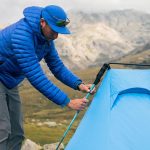The roller coaster winter season at western mountain resorts managed to wrap up with a revenue increase of 1.8 percent over last year as of April 30. The aggregated figure set a new revenue record among participating properties. Although occupancy finished the season down one percent compared to the previous winter, increases in the Average Daily Rate (ADR), enhanced total revenues. The season-end summary was reported by Inntopia in their monthly DestiMetrics Market Briefing to participating lodging and marketing organizations.
Erratic snow patterns in many, but not all western destinations, which didn’t settle into consistent and steady snowfall until mid-February, created booking challenges as lodging properties adjusted rates to keep visitors coming. The late season storms and an early April Easter holiday boosted the month of April to a notable 6.5 percent increase in occupancy, and while the ADR was down for the month, revenues rose 5.4 percent compared to last April and contributed to a strong finish for the season.
“This past winter was a bit of a wild ride, and yet despite the challenges of unusual snow patterns and market indexes that posted some dramatic swings, the season made some impressive rebounds once the snow arrived and many areas did much better than they were expecting back in December and January,” observed Tom Foley, vice president of Business Intelligence for Inntopia. “But some regions definitely had an easier time, particularly at northern Rocky Mountain resorts in Montana, Wyoming and Idaho.”
Just as the uncertainties of weather can impact a season, economic indicators can also play a role in travel and discretionary spending. The instability on Wall Street that began in February persisted through April with dramatic ups and downs of key financial market indexes. The Dow Jones Industrial Average (DJIA) finished essentially flat in April with an 0.25 percent increase from March. Although tiny, it is the first gain since January, and the Index remains 15.4 percent higher than it was last April. The Consumer Confidence Index (CCI) edged up a modest 1.3 percent to reach its second-highest level since December 2000. Job creation fell well below expectations with 164,000 new jobs in April—or 28,000 less than projected. It did lead to a drop in the Unemployment Rate to 3.9 percent and its lowest level in 18 years but was partially due to 410,000 workers dropping out of the job market during the month. Wages continue to lag behind inflation.
“Concerns about trade wars and trade agreements are continuing to rumble around, but so far, markets are remaining strong and a weakening dollar abroad and strong global economy will hopefully combine to boost destination travel from international visitors in the coming months,” explained Foley. “Consumers don’t seem to be affected by sluggish wage growth as overall ADR rose throughout the winter and that pattern is continuing into the summer,” he added.
Summer Revenue and Occupancy Climbing but Varies by Region
As of April 30, summer occupancy from May through October is up 4.2 percent compared to last year at this time, with increases in every month except September, which is down a slight 1.8 percent. Aggregated ADR is up 3 percent and is also showing increases in five of the six months—all but August, which had a tiny, 0.4 percent decline. The combination of growing occupancy and ADR is delivering a strong 7.1 percent gain in summer revenues compared to this time last year.
However, the monthly briefing also illustrated some notable differences in booking patterns among the different western mountain regions. Resorts in the Northern Rockies (Mont., Wyo. and Idaho), are experiencing declines in occupancy in every summer month ranging from a 3.6 percent drop in July to a dramatic 21.4 percent drop in the month of October, leading to an overall 10 percent drop for the full summer. Since this is still relatively early in the booking season, the briefing noted that there is still time for affected destinations to adjust rates and messaging to increase visitation. In contrast, the combined region of the southern Rockies (central and southern Colorado, Utah) and California is reporting increased occupancy in all six summer months with an aggregated increase of seven percent compared to last summer at this time.
“As we close the book on the winter of 2017-18, it is with a sigh of relief and the knowledge that thanks to a vital assist from Mother Nature, we dodged a bullet,” Foley admitted. “Looking forward to summer, barring any major economic or geopolitical disruptions, this should be another very strong summer for western mountain destinations.”












